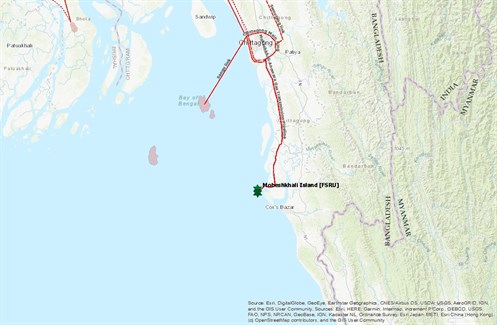Saudi Aramco to supply LNG to Bangladesh
Saudi Arabian state energy company Aramco plans to supply liquefied natural gas (LNG) to Bangladesh as part of a tentative $3 billion deal signed in October, officials told Reuters.
ACWA Power and Saudi Aramco signed a deal with Bangladesh Power Development Board to develop a 3,600-megawatt LNG-based power plant and terminal in the country.
The power plant and an onshore regasification terminal could be built in the Moheshkhali area in Cox’s Bazar or an alternative location, upon completion of a feasibility study.
“Aramco will indeed supply the LNG. The source of LNG is Aramco. In addition, they will build the LNG terminal to store the LNG,” said Salman Fazlur Rahman, investment adviser to Bangladeshi Prime Minister Sheikh Hasina.
“ACWA will build the power station to convert LNG to power,” said Rahman, who has been closely involved with the Saudi investment proposals.
Aramco declined to comment.

Riyadh and Dhaka have long maintained close bilateral relations, with Saudi Arabia being the largest source of Bangladesh’s vital foreign remittances.
Relations have deepened in recent years, with the two countries signing a defence agreement in February. In March, a Saudi investment delegation signed a host of agreements and memorandums of understanding worth up to $20 billion.
Bangladesh is expected to become a major LNG importer in Asia, alongside Pakistan and India, as domestic gas supplies fall.
State-owned Bangladesh Petroleum Corp imports 700,000 tonnes of Arab Light crude oil from Aramco annually for its sole refinery.
Aramco is the world’s largest oil company and plans to be a major global LNG player.
Bangladesh’s annual imports of LNG could nearly triple to at least 10 million tonnes over the next three to four years, Tawfiq-e-Elahi Chowdhury, energy adviser to the prime minister, told Reuters in September.
The country has two floating storage and regasification units with a total regasification capacity of 1 billion cubic feet per day - equal to about 7.5 million tonnes per year.
It is also building a land-based terminal that can handle 7.5 million tonnes of LNG per year, expected to be ready in five years. (Additional reporting by Jessica Jaganathan in SINGAPORE; Editing by Dale Hudson)

- 236-mile Texas-to-Gulf pipeline reaches FID in $2.3-B LNG expansion push
- ExxonMobil halts 1-Bft3d blue hydrogen project in Texas
- Bechtel shares findings of tragic accident at Port Arthur LNG facility
- Aramco and Yokogawa commission multiple autonomous control AI agents at Fadhili gas plant
- Ukraine will resume gas imports via Transbalkan route in November



Comments